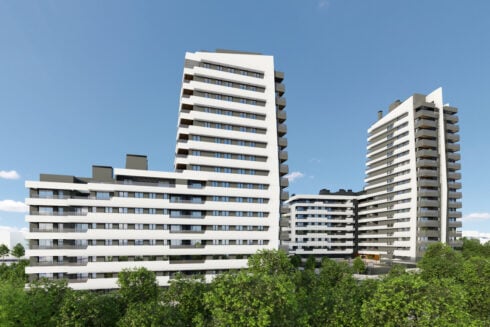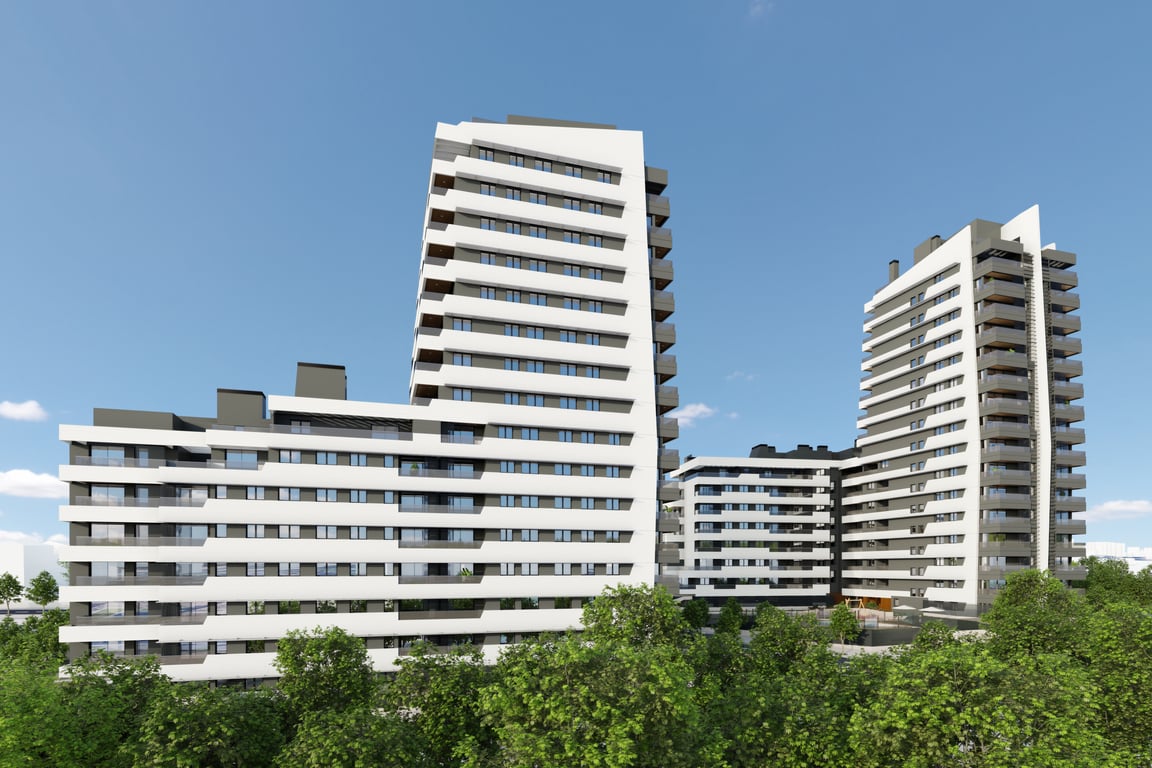By Rachel Gore
A NEW wave of black and white striped buildings is making its way across Spain – and causing backlash from architects who call them ‘fast food’ homes.
Known colloquially as zebra housing blocks, the familiar sight is popping up all over the country, from working class barrios to luxury developments.
Some even boast marble kitchens, underfloor heating, en suite bathrooms and walk-in wardrobes.
But there is a group of architects who have started referring to these blocks as ‘fast food’ homes – repetitive eyesores that are constructed rapidly and feature a one-size-fits-all design.
They are characterised by horizontal black and white stripes, dark glass panels and both polymer and glass-reinforced concrete.
In the architects’ opinion, zebra housing blocks are unsustainable and can not create a city as they are not linked to the climate or built with local materials.
These professionals have taken to social media, under the Instagram handle @bloque_cebra, where they are sharing their opinions as a collective so that their criticisms cannot be associated with a single name.
The architects claim that the expansion of zebra housing blocks is due to developers who reduce everything to efficiency and disregard the architect’s work.
READ MORE: Spain hits luxury property giant Engel & Völkers with €16m ‘fake self-employed’ fine
 Zebra housing blocks are cropping up all over Spain – and not everyone loves them. Photo courtesy of Med Arquitectos
Zebra housing blocks are cropping up all over Spain – and not everyone loves them. Photo courtesy of Med Arquitectos
They therefore blame the number of these blocks on developers, city councils and buyers.
Developers have defended the blocks, stating that the product works and is valued by their clients.
They also highlight the blocks as a solution to high housing demands, since they are built quickly and efficiently with an appeal to those from all classes.
The blocks can now be seen in Malaga, Bilbao, Madrid, Valencia and Pamplona which highlights @bloque_cebra’s point that housing is not being built in line with a particular city or community.
The Council of Architectural Associations has agreed that the extensive nature of the blocks has the potential to be harmful. It instead advocates for ‘quality architecture that adapts to the environment’.
This zebra style of housing is not entirely new to Spain: in the 1960s and 1970s, zebra striped buildings were created to house migrants.
READ MORE: Costa del Sol property prices soar 17% as two-bed flat reaches an eyewatering €318,000
These past public housing developments were however linked to the location they were in – they were recognisably tied to local communities.
In contrast, the modern-day zebra housing blocks are often ‘hyper-privatised’, says Bilbao-based architect Iñigo Berasategui.
Many of the luxurious ‘fast food’ housing blocks feature exclusive paddle tennis courts and swimming pools that can only be used by residents.
This is a further criticism which @bloque_cebra has made.
Since the account’s launch this summer, they already have two million visits to their profile a month – something which they are attributing to people feeling fed up with the zebra pattern becoming normalised.
As zebra housing blocks continue to multiply across Spain, the debate surrounding them continues – individuals are questioning whether they are a smart solution to modern housing demands or signs that cities are being shaped by speed and profit.
Click here to read more Property News from The Olive Press.
